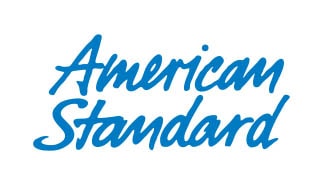Published on
November 14th, 2022The Anatomy of Under-Sink Traps: How They Work and What to Do About Leaks and Clogs
Sink problems are a perennial issue for New York City property owners and managers. Knowing more about how under-sink traps work will help you fix leaks and clogs, which are the most common concerns with this piece of plumbing anatomy. Here’s some expert advice from Sanitary Plumbing, so you can try some DIY repairs and save calls to us for more urgent and complicated matters.
How Under-Sink Traps Work
P-traps explained
The under-sink trap was patented back in the 18th century, although some versions of it were likely in use for hundreds of years before. Originally, the trap was shaped like the letter “S,” which later evolved in some fixtures to become the “P-trap” because it’s shaped like the letter “P.”
The purpose of the under-sink trap was — and still is — threefold:
- To prevent sewer gas from rising up into the interior of a room through a sink or toilet by creating a small well to hold water and block odor
- To keep hair, sediment, and other unwanted elements from going further into the plumbing system, where they are more difficult to unclog
- To catch small items, like jewelry, that accidentally fall down the drain
Sewer gas can be more than just a nuisance odor. In large amounts, the hydrogen sulfide in the gas can make people sick with headaches and dizziness.
Most sinks today use a P-trap, while toilets use a mix of both S- and P-traps. It’s worth noting that P-traps generally function better than S-traps, as it’s easier for strong suction to pull the water out of an S-trap, thereby defeating its odor-prevention purpose.
Maintenance for Under-Sink Traps
Fewer problems with routine care
Drain maintenance is one of the most important things you can do as a New York City property owner or manager. Here are some things you can do on your own, in addition to using our regular service for large buildings, where drains can be a constant problem.
In order to maintain their usefulness in preventing odors, under-sink traps need to have a small amount of water sitting in them. Therefore, you want to use these drains regularly to replenish any lost water. So, toilets and sinks in rarely used guest rooms, for example, should get a flush or rinse once every few weeks.
All building occupants should know what can and cannot go down the drain. Some common items that form clogs include:
- Diapers and diaper wipes
- Feminine hygiene products
- Cleaning and personal care wipes
- Cooking oil and grease (especially anything that solidifies at room temperature)
- Coffee grounds
- Vegetable peels and food remains
Using strainers or perforated drain covers will catch unwanted items before they become problematic and also prevent the loss of earrings, rings, and small valuables that prompt calls to building management.
You’ll find P-traps in other locations besides sinks and toilets. They’re used under or behind clothes washing machines and dishwashers, as well as beneath showers and tubs, although access to these traps precludes DIY repair for most people. This is the type of P-trap job that should be done by a plumber.
If you need help with a stubborn drain clog, P-trap disassembly, or trap replacement, Sanitary Plumbing can get your drain running properly again in no time. Call us at 212-734-5000 today to schedule an appointment.








